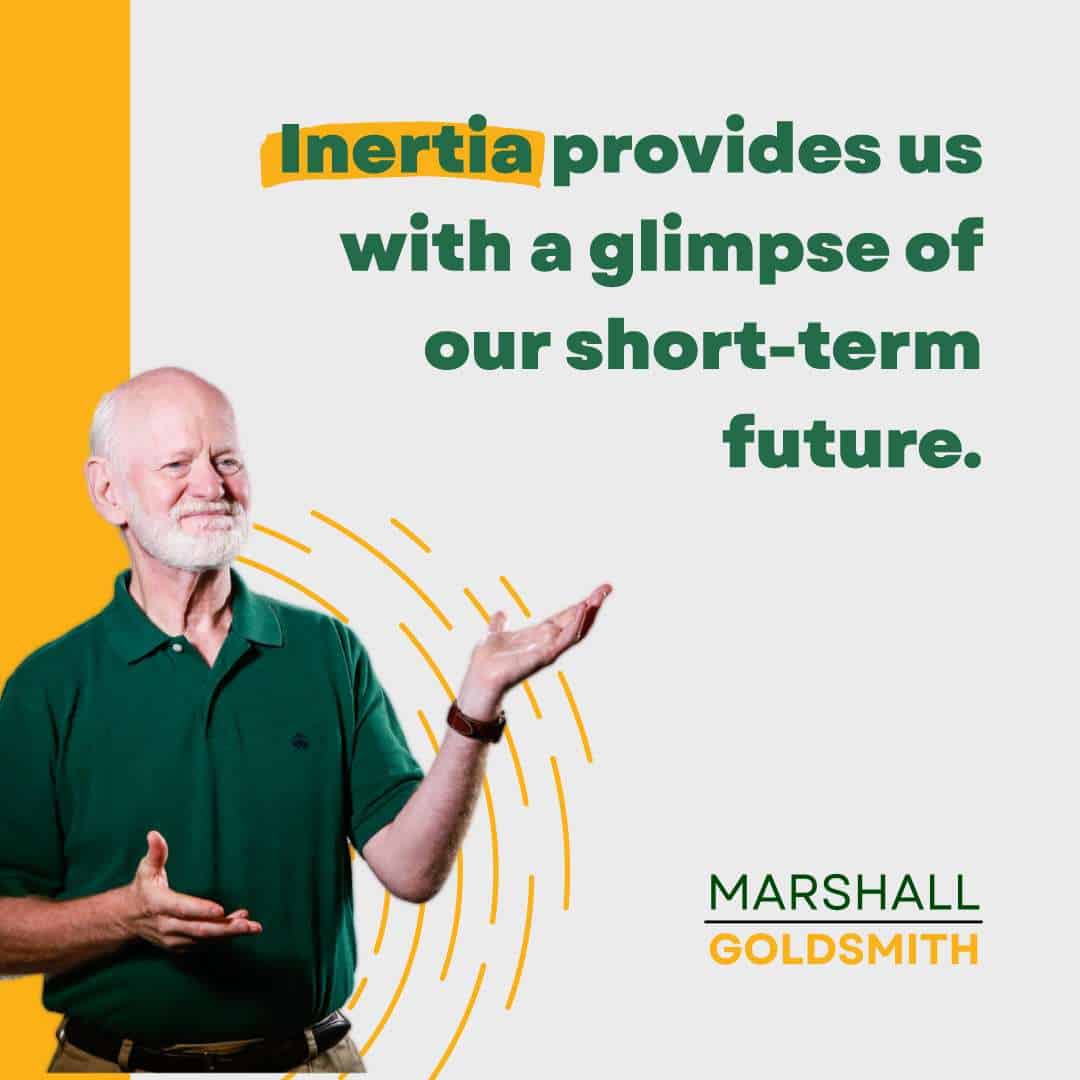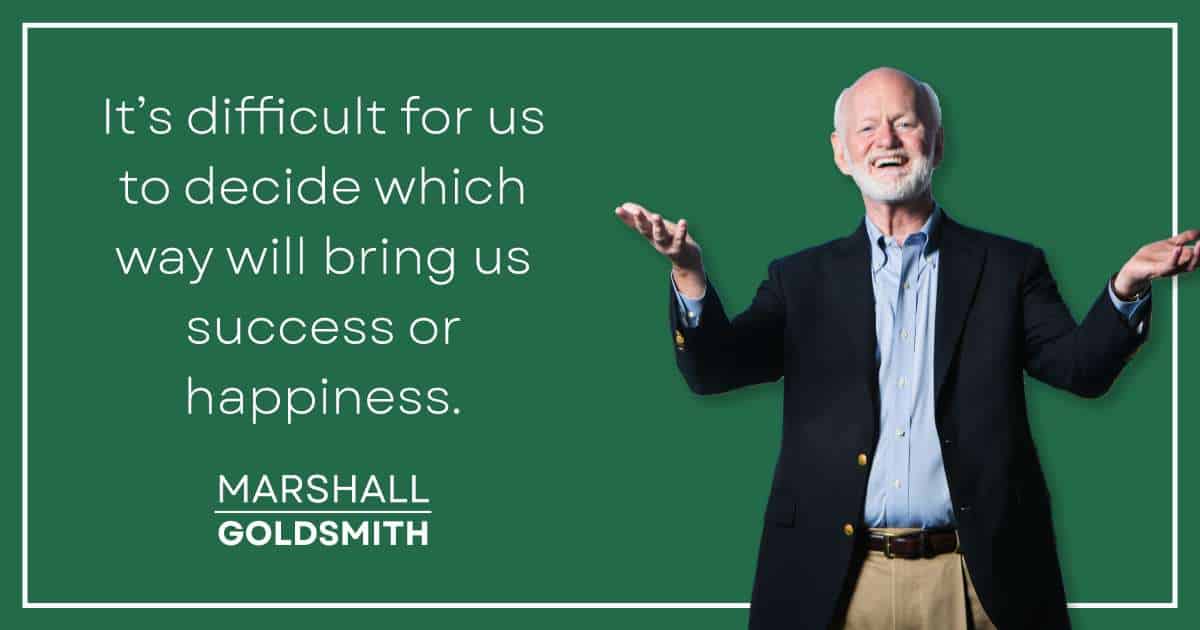Playing Favorites By Marshall Goldsmith There’s a reason I devote...
It’s so difficult for us to decide which way will bring us success or happiness.
When we were in grade school, many of us read or learned by heart the Robert Frost poem, “The Road Not Taken,” which begins: “Two roads diverged in a yellow wood,/And sorry I could not travel both.”
How many of us have wished we could do both? To take both ways and save ourselves the anguish of actually deciding to act upon the barriers holding us back in our choices and actions, frustrating our will to live our own life, are formidable and numerous. It is possible to change your life — and many more people are doing it than ever before.
It’s easier today to create your own life than it has ever been. As many people are aware, in the last few years, with the pandemic upending many areas of society, and changing profoundly how people work, there has been a great upheaval — the great resignation, in a way, that has led to millions of Americans leaving unfulfilling, underpaid jobs to find something new. They are demanding better working conditions, better recognition of their talents, higher pay, and more. Somehow, along with the pandemic came a new freedom to choose your life.
This is a good sign. Whether it lasts is another thing. The number of choices we have, mainly due to technology, may present a problem.

One of Peter Drucker’s final insights before he died at age ninety-five in 2005 indicated as much: In his article, “Managing Knowledge Means Managing Oneself,” he wrote that in a few hundred years, when the history of our time will be written from a long-term perspective, it is likely that the most important event historians will see is not technology, not the Internet, not e-commerce. It is an unprecedented change in the human condition. For the first time, literally, substantial and rapidly growing numbers of people have choices. For the first time, they will have to manage themselves. And society is totally unprepared for it.
Freedom and mobility create what the American psychologist Barry Schwartz famously described as “the paradox of choice.” That is, we do better with fewer choices, not more. Faced with thirty-nine flavors of ice cream, we often make a disappointing choice. It’s much easier to pick between two options—say, vanilla or mint chocolate chip—and be satisfied.
Anyone who relies on streaming services for entertainment realizes this too: an abundance of choices can lead to not knowing what to choose, or settling for something you might not like.
In creating your own life in a complex, rapidly advancing world, not only is it hard to sift through the myriad choices, but even when we know what we want, we don’t always know how to follow our dreams.
The barriers holding us back in our choices and actions, frustrating our will to live our own life, are formidable and numerous. Here are some of them:
Inertia.
Inertia is the most resolute and determinative opponent of change. (Think again of someone deciding what to watch on Netflix and simply clicking on whatever comes up, too paralyzed by choice to put much thought into the choice and letting inertia take over.)
For years, whenever I’ve been confronted with clients failing at changing the behavior they insist they want to change, I have fallen back on the following mantra: Our default response in life is not to experience meaning or happiness. Our default response is to experience inertia.
I want them not only to appreciate inertia’s omnipresence but to see their particular inertia in a new light.
We think of inertia as the state of being inert or motionless — one of our purer displays of passivity and disengagement. It’s not. Inertia is an active event in which we are persisting in the state we’re already in rather than switching to something else. This is not mere semantics. It’s a different point of view, characterizing even our most sloth-like passivity as the active choice to persist in the status quo (i.e., no choice is a choice too; it’s choosing to say, “I’ll pass”).
On the other hand, the moment we shift into a new gear and choose to engage in something different, we cease to persist as inertia’s patsy. Being inertia’s victim or escaping its malign gravitational pull is a choice that’s solely ours to make. When people discover that they have a choice, they are usually empowered to change.
Another intriguing characteristic of inertia is how well it provides us with a glimpse of our short-term future. It is more accurate than any algorithm or forecasting model. Inertia is the reason I can stipulate the following rule about your immediate future: The most reliable predictor of what you’ll be doing five minutes from now is what you’re doing now. If you’re taking a nap or cleaning your home or shopping online, there’s a high probability that you’ll be doing the same thing five minutes from now.
This short-term principle also applies in the long term. The most reliable predictor of who you’ll be five years from now is who you are now. If you don’t know a foreign language now or how to make bread from scratch, you probably won’t know in five years either. If you’re not talking to your estranged father now, chances are you won’t be talking to him five years from now. And so on for most of the details that describe your life today.
Appreciating our agency over inertia’s impact can teach us how to shape it into a positive force. When we develop productive (rather than destructive) habits or routines—for example, exercising first thing in the morning, eating the same nutritious breakfast, taking the same hyper-efficient route to work each day—inertia is our friend, keeping us grounded and committed and consistent. These are the features that make inertia a major force affecting every aspect of an earned life. But even when we gain dominion over inertia, there remain a few other targeted forces that also block us from living our own life. I’ll examine these in the next few posts.

Adding Too Much Value Won’t Get You There By Marshall...
C-Suite Master Class: No, But, However By Marshall Goldsmith Continuing...
The Doerr Institute: Expanding the Market for Coaches By Marshall...
Making Leadership Development Part of the College Degree at Rice...
Sanyin Siang – Winner of the Thinkers50 Marshall Goldsmith Coaching...
Thinkers50 Marshall Goldsmith Distinguished Achievement Award in Coaching – Nominees...
Leading with Influence: What Is Influence360°? By Marshall Goldsmith Founder...
Are You a Dominator, Manipulator, Persuader or Influencer? By Marshall...
Leading with Influence: Redefining Modern Influence Part 2 By Marshall...
My mission is simple. I want to help successful people achieve positive, lasting change and behavior; for themselves, their people, and their teams. I want to help you make your life a little better. With four decades of experience helping top CEOs and executives overcome limiting beliefs and behaviors to achieve greater success, I don’t do this for fame and accolades. I do this because I love helping people!
As an executive educator and coach, I help people understand how our beliefs and the environments we operate in can trigger negative behaviors. Through simple and practical advice, I help people achieve and sustain positive behavioral change.